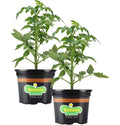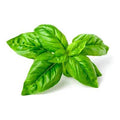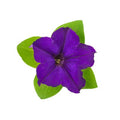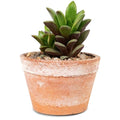
Do you love homegrown vegetables but live in a forest? Or, is your backyard surrounded by a tall privacy fence that also keeps out light? Or, does your neighbor's garage block the sun from reaching your side garden? No matter what kind of sunlight challenge your yard may present, take heart: You can still enjoy delicious, homegrown food by choosing vegetables that grow well in the shade.Here's what to do to grow shade-tolerant vegetables (find more on each step below):
- Get a handle on how much light you actually get.
- Pick your growing place.
- Choose which vegetables to grow.
- Purchase your Bonnie Plants®.
Measure How Much Light Your Garden Gets
Take a really good look at the sunlight that reaches your yard. Check it not only at different times of the day, but also in each season. Summer may find your backyard fully shaded, but what's the status in spring, before the trees leaf out? How about in autumn, when the weather cools and leaves begin to fall? What's the light situation during different times of the day? Do you have a dark wall that you can paint white to reflect sunlight, boosting the amount of light available to your plants?
You might be surprised by the amount of dappled light peeking through branches, or the way sunlight shifts positions throughout the year, illuminating your garden in spring and fall. Those are perfect seasons to grow many veggies! While it's true that some vegetables (like tomatoes, peppers, and cucumbers) require at least 6 to 8 hours of full sunlight to flourish, other vegetables, like root crops, can tolerate part shade (think 3 to 6 hours of sun per day), and a few edibles, like some leafy greens, can even grow in shade (technically defined as less than 3 hours of light per day). Depending on your climate, vegetables may even appreciate some afternoon shade, particularly in extremely hot Southern summers, where full sun makes many plants wilt.
Vegetables do need at least some sunlight in order to grow, though. If zero sunlight reaches your back garden, consider growing veggies in containers in a partially sunny spot in your front yard or on a deck or balcony. Or, you may want to "limb up" the trees in your yard by removing the lower branches, which can allow more sunlight to penetrate leafy shade. In summer and fall, sunlight slants beneath the tree canopies, so doing this can make a real difference.
If you struggle with a complete lack of sunlight, consider growing mushrooms, like shiitakes—they're easy to cultivate and grow in full shade. (But always source your spawn or plugs from a highly knowledgeable, reputable supplier.)
Choose Your Location
After you determine the amount of sun available in your garden, pick a location to plant your vegetables. No matter where you grow, good soil is essential for a good harvest. Vegetables needs fertile, well-drained soil rich in nutrients for strong plants and big harvests. If you plan to grow in-ground, improve your garden soil with aged compost-enriched Miracle-Gro® Performance Organics™ All Purpose In-Ground Soil, particularly if you have clay, sand, or nutrient-depleted soil. If you'll garden in raised beds, choose nutrient-dense but light-weight Miracle-Gro® Performance Organics™ Raised Bed Mix, specially formulated for raised bed gardening. Many vegetables grow beautifully in containers, too, providing a pretty and practical addition to your patio, balcony, or front porch. Choose Miracle-Gro® Performance Organics™ All Purpose Container Mix, an even lighter-weight potting mix that gives veggies plenty of nutrition.
Along with good soil, make sure to choose a spot for your vegetables with water close by. Vegetables need about an inch of water per week, and if Mother Nature doesn't deliver, you'll want a water source nearby to make your chores easier.
Pick Your Favorite Shade-Tolerant Vegetables
Make a list of your favorite foods, then match it with our handy lists of shade-tolerant vegetables, broken out by the amount of sunlight they need.
Vegetables That Grow in Part Shade (3 to 6 hours of sun per day):
- Asparagus: Choose a permanent location in the garden for this delicious perennial crop.
- Beets: Try adorable, petite Better Than Shrute's Baby Beets (part of the Foodie Fresh line, available only at Lowe's).
- Brussels sprouts: The more hours of sun you can give this cool-season crop, the better your harvest will be.
- Cabbage: Try Early Jersey Wakefield, which matures in just 60-75 days—perfect for spring gardens before the trees leaf out.
- Carrots: Try sweet, tasty Crispy Crunch Baby Carrots (part of the Foodie Fresh line, available only at Lowe's) that mature in just 30-40 days.
- Cauliflower: Try gorgeous and tasty Graffiti Cauliflower, which matures in just 60 days (part of the Harvest Select series, available only at The Home Depot).
- Celery: This cool-season crop especially appreciates afternoon shade.
- Chinese cabbage: Try Chinese Napa Cabbage, which matures in just 45 to 60 days.
- Kohlrabi: Many gardeners think this underappreciated but delicious veggie looks like a space alien!
- Radish: This easy-to-grow vegetable matures in 30 days and can be planted in the shade of taller crops.
- Rhubarb: Because it's a perennial, choose a permanent spot in your garden for this famous pie ingredient.
- Rutabaga: A cross between a turnip and cabbage, this cool-season crop tastes sweeter when kissed by frost.
Vegetables That Grow in Shade (less than 3 hours of sun per day*):
- Arugula: This cool-season crop that appreciates shade to help keep its flavor spicy, but not bitter.
- Kale: This trendy green comes in a wide range of varieties, like Prizm—a ruffled, compact variety that's excellent for containers (part of the Harvest Select line from The Home Depot)—and Purple Kale, a highly ornamental edible with gorgeous color (part of the Foodie Fresh line, available from Lowe's).
- Leeks: While the plants may grow smaller in shade conditions, the mild onion flavor will still add lovely flavor to recipes.
- Lettuce: Choose leaf lettuce varieties for shade, such as Sandy Oakleaf Lettuce, part of the Harvest Select line, available from The Home Depot.
- Mustard greens: Try pungent and pretty Japanese Giant Red Mustard, with bold maroon and chartreuse leaves.
- Pac choi: Pretty purple Rosie Pac Choi grows baby leaves that are ready for harvest in just three weeks (part of the Harvest Select line, available only at The Home Depot).
- Scallions: While they do like sun, scallions will also grow well in shade—just a little more slowly.
- Spinach: A cool-season crop that matures in 40 days, spinach can actually do better in shady gardens, as the shade helps prevent it from bolting (producing flowers too early) and becoming bitter when daylight lengthens in late spring and early summer
- Swiss chard: Swiss chard grown for its crunchy stems needs more light, but if you're growing this beautiful plant mainly for the tasty leaves, this plant will do well in the shade.
- Turnip greens: While turnips typically need full sun to produce hearty roots, the greens grow well in shade—and make a tasty addition to meals.
* The vegetables listed above will also thrive in partial shade.
Along with vegetables, many herbs grow well in partial shade or shade, including mint, chives, parsley, cilantro, lemon balm, thyme, and tarragon.
Select Bonnie Plants
If you want a great harvest in your shady garden, start with Bonnie Plants. For more than 100 years, our company has produced plants specifically for home gardeners, growing the best varieties that set you up for success. With more than 70 greenhouses nationwide that deliver locally-grown plants to retail locations, the Bonnie Plants you select at your local retailer will be vigorous and strong—and ready to get growing in your garden, whether it's located in shade or full sun. Look at the plant tags for more info on how much light your veggies and herbs require and for planting and care instructions.
So, don't let your shady yard get you down. With a little planning and a bit of flexibility, you can still grow a garden chock full of delicious, homegrown food. Then, when harvest time rolls around, you can tell your friends that those tasty veggies were—literally!—made in the shade.




 Herbs
Herbs
 Vegetables
Vegetables
 Fruit
Fruit
 Flowers
Flowers
 Succulents
Succulents


